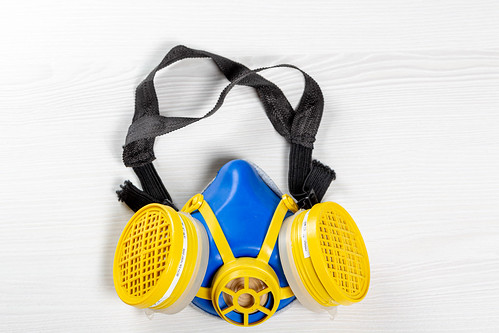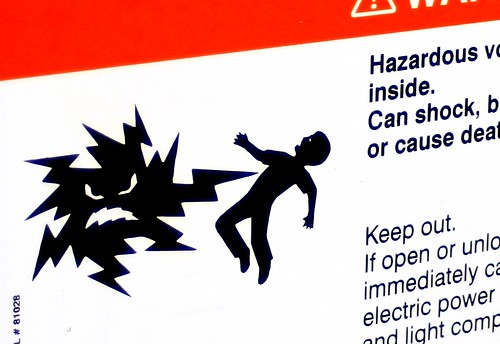I wrote recently about guidance from the Occupational Safety and Health Administration (OSHA) and the Centers for Disease Control and Prevention (CDC) to help employers protect their workers against COVID-19 (coronavirus) infection. (see HERE).
Read MoreAudit, Compliance and Risk Blog
OSHA issues interim enforcement procedures for COVID-19 cases
Posted by Jon Elliott on Wed, Apr 22, 2020
Tags: OSHA, Coronavirus, CDC, Covid-19, Compliance Safety
Protecting employees against coronavirus at operating workplaces
Posted by Jon Elliott on Wed, Mar 25, 2020
How can employers protect workers against coronavirus exposures? In expanding parts of the country, most employers do so by complying with applicable Shelter in Place orders. Workplaces still in operation face more complicated occupational health situations.
The Occupational Safety and Health Administration (OSHA) and the Centers for Disease Control and Prevention (CDC; directly and through its subsidiary National Institute for Occupational Safety and Health (NIOSH)) and other occupational health agencies issue guidelines for workplace safety, which can be used in locations that are still open. (This approach is typical; I wrote about their Zika Virus guidelines HERE). In addition, the Equal Employment Opportunity Commission (EEOC) provides interpretive guidance on how to apply disabilities and anti-discrimination laws to the design and implementation of protective programs.
Read MoreTags: OSHA, EEOC, Coronavirus, Protecting employees, CDC, Safety and Health at Work, Pandemic
Appeals Court Affirms OSHA’s Approach to Workplace Air Testing and Respiratory Protection
Posted by Jon Elliott on Tue, Feb 11, 2020
The Occupational Safety and Health Administration (OSHA) requires employers to evaluate whether air quality in their workplaces requires respiratory protection for workers, and to establish comprehensive evaluation and respiratory protection programs where necessary. (I wrote about recent revisions here). Late last year, a federal appeals court upheld OSHA’s approaches to workplace testing requirements under the Respiratory Protection Standard (Standard) (Secretary of Labor v. Seward Ship's Drydock, Inc.).
Read MoreTags: Business & Legal, Employer Best Practices, Health & Safety, OSHA, Employee Rights
If it’s true that “there’s safety in numbers,” it’s just as true that employees working in isolation risk more severe consequences from most incidents. Worker protection laws have long recognized this truism in industrial settings where medical emergencies, accidents, or even “bad air” can be fatal to a lone worker who could readily be rescued by co-workers were any present. In recent years, worker protection agencies in most Canadian provinces have adopted requirements to protect “workers working alone or in isolation.” The movement has spread to the United States, including a special focus on hotel workers. Because of these trends, now is a good time to review requirements and compliance programs.
Read MoreTags: Business & Legal, Health & Safety, OSHA, Workplace violence
As we approach the winter holidays, retailers everywhere are planning their biggest cycles of annual sales. One doesn’t have to be a grinch to notice that these events can introduce additional hazards for retail employees – and for others who may be shopping. It’s therefore a good time to review guidance for managing these hazards, which was promulgated by the Occupational Safety and Health Administration (OSHA) in 2012. This guidance followed a national review after a highly-publicized incident during which a worker at a Long Island Walmart was trampled to death by a crowd mobbing the store’s Black Friday (day after Thanksgiving) sales event in 2008. OSHA determined that Walmart should have anticipated crowd-related hazards, and fined the company for a violation of the Employer’s General Duty Clause (I wrote about this here)
Read MoreTags: Business & Legal, Employer Best Practices, Health & Safety, OSHA, Employee Rights, EHS, Workplace violence
The Occupational Safety and Health Administration (OSHA) does not routinely inspect all employers, but instead allocates its inspector resources based on the agency’s evolving compliance and enforcement priorities. These priorities include a complex set of national/state/local priorities, such as “national emphasis programs (NEPs)” for process chemical safety or machine guarding, industry focus projects on primary metals industries, and site-specific responses to reported injuries or worker complaints. To meld and rationalize these overlapping priorities, OSHA headquarters periodically establishes weighting programs under which local offices tabulate inspection statistics to demonstrate inspection productivity by achieving higher overall scores. Effective October 1, 2019, OSHA has introduced a revised inspection weighting system, intended to motivate local OSHA offices to revise their inspection priorities.
Read MoreTags: Business & Legal, Employer Best Practices, Health & Safety, OSHA, Employee Rights, PSMS
The Occupational Safety and Health Administration (OSHA) requires employers to evaluate whether air quality in their workplaces requires respiratory protection for workers, and to establish comprehensive evaluation and respiratory protection programs where necessary. In September, OSHA issued minor revisions to its respiratory protection requirements provisions for general industry (29 CFR 1910.134), adding two new quantitative fit testing protocols. Because of these changes, now is a good time for employers to review requirements and compliance programs.
Read MoreTags: Employer Best Practices, Health & Safety, OSHA, Employee Rights, Environmental risks, EHS
Although workplace air quality concerns usually focus on contaminants produced by workplace activities, this summer’s wildfire season provides a reminder that unsafe workplace air may also enter from outside and offsite. On July 18, California’s Occupational Safety and Health Standards Board adopted an emergency rule (8 CCR 5141.1) requiring worker protection from wildfire-produced bad air, which the state’s Division of Occupational Safety and Health (Cal/OSHA) began to enforce effective July 29. In California, you should prepare to comply; if you work someplace else but could be affected by wildfires then this rule provides a useful basis for approaching the issue.
Read MoreTags: Health & Safety, OSHA, Employee Rights, California Legislation, Environmental risks, Environmental, EPA
Among its many workplace health and safety standards, the Occupational Safety and Health Administration (OSHA) requires employers to protect employees during equipment servicing and maintenance, to prevent “unexpected” equipment energization, start up, or release of stored energy. OSHA’s Control of Hazardous Energy Standard—more often called the Lockout/Tagout or “LOTO” Standard after its primary compliance requirements—requires employers to establish and implement safety procedures to control such hazardous energy. The LOTO Standard has changed very little since OSHA adopted it in 1989, but the agency has just published a formal request for information – public comments – about two changes in workplace equipment over the past 30 years that might affect energy hazards and justify revisions to the LOTO Standard. The rest of this note summarizes existing requirements and discussed OSHA’s review of control circuits and workplace robotics.
Read MoreTags: Business & Legal, Employer Best Practices, Health & Safety, OSHA, Employee Rights, Hazcom
Occupational Safety and Health Review Commission Confirms Employer’s General Duty Clause Applies to Workplace Violence
Posted by Jon Elliott on Tue, May 14, 2019
On March 4, 2019, the U.S. Occupational Safety and Health Review Commission (Commission) issued its first affirmation of a citation and penalty issued by the Occupational Safety and Health Administration (OSHA) to punish a health care provider under the Employer’s General Duty Clause for failing to take adequate steps to prevent workplace violence. OSHA has issued citations under this Clause since 2012, but this is the first time that the Commission has confirmed one of these citations on appeal.
Read MoreTags: Business & Legal, Employer Best Practices, Health & Safety, OSHA, Employee Rights, Workplace violence










